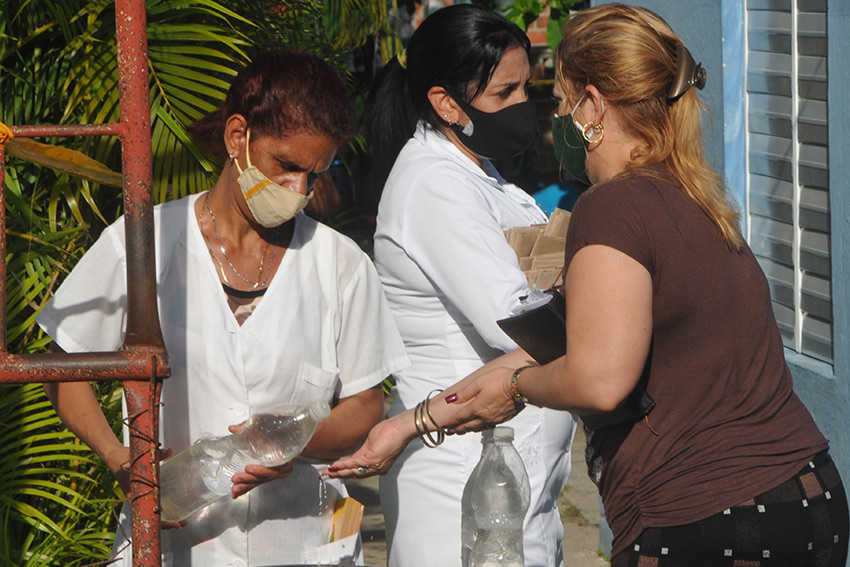
New protocols for the diagnosis and clinical management of COVID-19 positives, suspects, and contacts are in force from this Wednesday in the province of Las Tunas, given the increased transmission of the SARS-CoV-2 virus and the need to provide an effective response in the current epidemiological scenario, and optimizing resources.
Las Tunas, Cuba.- Dr. Gregory Pérez Héctor, Deputy Director of Health here, explained that the elements of the plan include the classification of people according to risk, symptoms, and degree of severity, besides the type of institutions aimed at the admission of patients.
In the Emergencies wards of the polyclinics, he said, the sample for PCR test will be taken to all symptomatic people with a positive antigen test and, without waiting for their confirmation, the therapeutic conduct will be carried out. Those with a negative antigen test will be re-evaluated after 48 hours with another, which, if positive, will be confirmed by PCR.
He emphasized that not all those classified in that category will go to the isolation centers; this will depend on their clinical condition and other factors that will be evaluated by the medical staff.
On the other hand, he explained that travelers, upon entering the country and as part of the check carried out at the border, will be applied an antigen test through the ultra microanalytic system (SUMA) or Biosensor that, if positive, will be ratified by a PCR. Those from Russia will be studied by PCR on the 12th day of their arrival; and the rest, on the fifth day. If during the quarantine period, he clarified, the traveler shows symptoms, becomes a suspect, and the provisions for those cases are applied.
NOVELTIES IN THE MANAGEMENT OF POSITIVE PATIENTS
With the updating of the protocols, the criteria for discharge from hospital facilities and isolation centers are also modified. Thus, for example, people who remain positive for 14 days or more, if they are clinically well will be discharged with follow-up at home by the medical office staff. This decision is due to that, after this period, the risk of spreading the disease is very low.
The admission at the home of those confirmed to be low risk, both asymptomatic and mild symptomatic, is among the main novelties. The institutions will only accept low-risk positives with moderate symptoms; as well as medium and high-risk patients with mild or moderate symptoms.
Pérez Héctor pointed out that patients will also be hospitalized if they require it due to their age, living conditions, or associated pathologies.
COLOSSAL CHALLENGE IN THE NEIGHBORHOODS
The new protocols are applied in the midst of an outbreak of positive cases to COVID-19 and, at the same time, in a scenario in which the admission of patients in hospital institutions has been pushed to the limit, with all the assurances that it implies sustaining the work. These procedures will make it possible to provide a better quality service in these centers, taking into account that the greatest responsibility will fall on Primary Health Care.
In Las Tunas, these changes occur when the forecasts are not very encouraging, especially because, in recent weeks, the reality has been in correspondence and has even exceeded the mathematical models. Only the figures for the first 15 days already exceed everything reported in previous months. "It is not to alarm us, what we have to do is raise awareness to stop the spread," epidemiologist Aldo Cortés González warned.
If the current rate of infections continues, more than 20 thousand people would be affected by the pandemic here in mid-August, adding the possible confirmed cases and the associated suspects, which are being five for each one.
The challenge, therefore, remains gigantic and if discipline was necessary before, now, it is even more so. Violation of the guidelines, mainly by patients entering their homes, could trigger intra-household transmission. The most important thing now is to strengthen ties between health personnel and community workgroups to enforce the indications and regain epidemiological stability in the territory.





